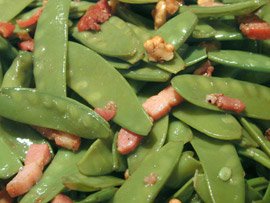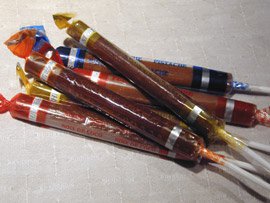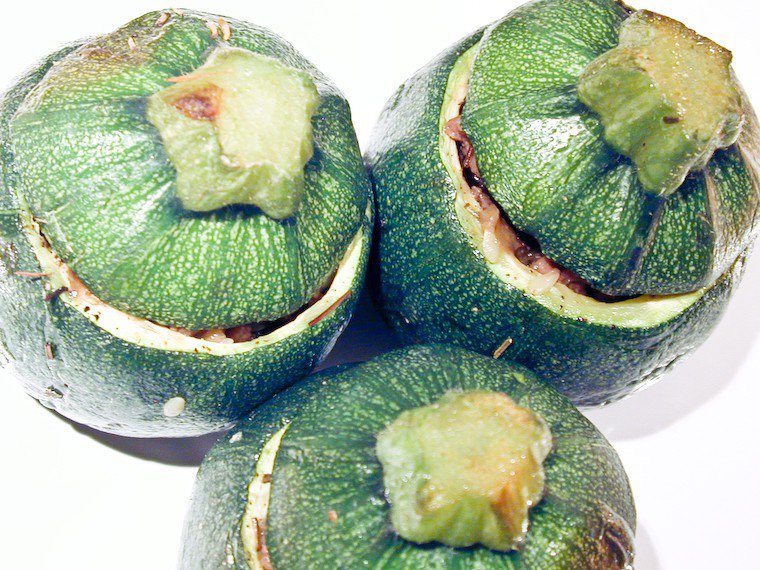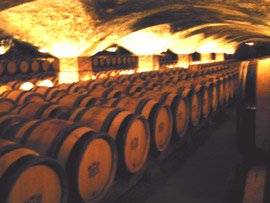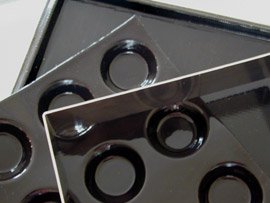
Two weeks ago, I attended a home sale of Demarle Flexipan molds, hosted by my friend and fellow food-blogger Pascale. Demarle is the original inventor of those nonstick flexible baking molds, made of silicon and glass fiber. Originally sold to professionals only, they have been available to happy home bakers for a few years : most brands distribute their products in department stores and such, but Demarle chose to sell their molds (and the other cooking/baking tools they make) in Tupperware-style meetings instead.
Pascale was there of course, as were her sister and our friends Alisa and Isabelle, of the Paris Potluck crowd. Pascale and Chantal, the Demarle representative, had prepared quite a few things for us to taste, to illustrate what you could make with the molds. In particular, Pascale had baked chocolate hazelnut madeleines, which she insisted were “ratées” (failed). We couldn’t have disagreed more, and in fact thought they represented such a high risk for the health and sanity of the general public, that we made sure to eat as many as we possibly could. It was tough, but I think we have reason to be proud.
It was my first time attenting such a meeting, and it was a lot of fun. Chantal presented the different products and their possible uses, they were passed from hand to hand, and we made a couple of recipes together (a really tasty spinach and fresh cheese roll, and some gougères, those little cheese puffs). I had a grand time, as I always do when I’m in the same room with other cooking enthusiasts, and Pascale’s bright and sunny kitchen, filled with goodies as it was, was the perfect place to be on that beautiful June day.


